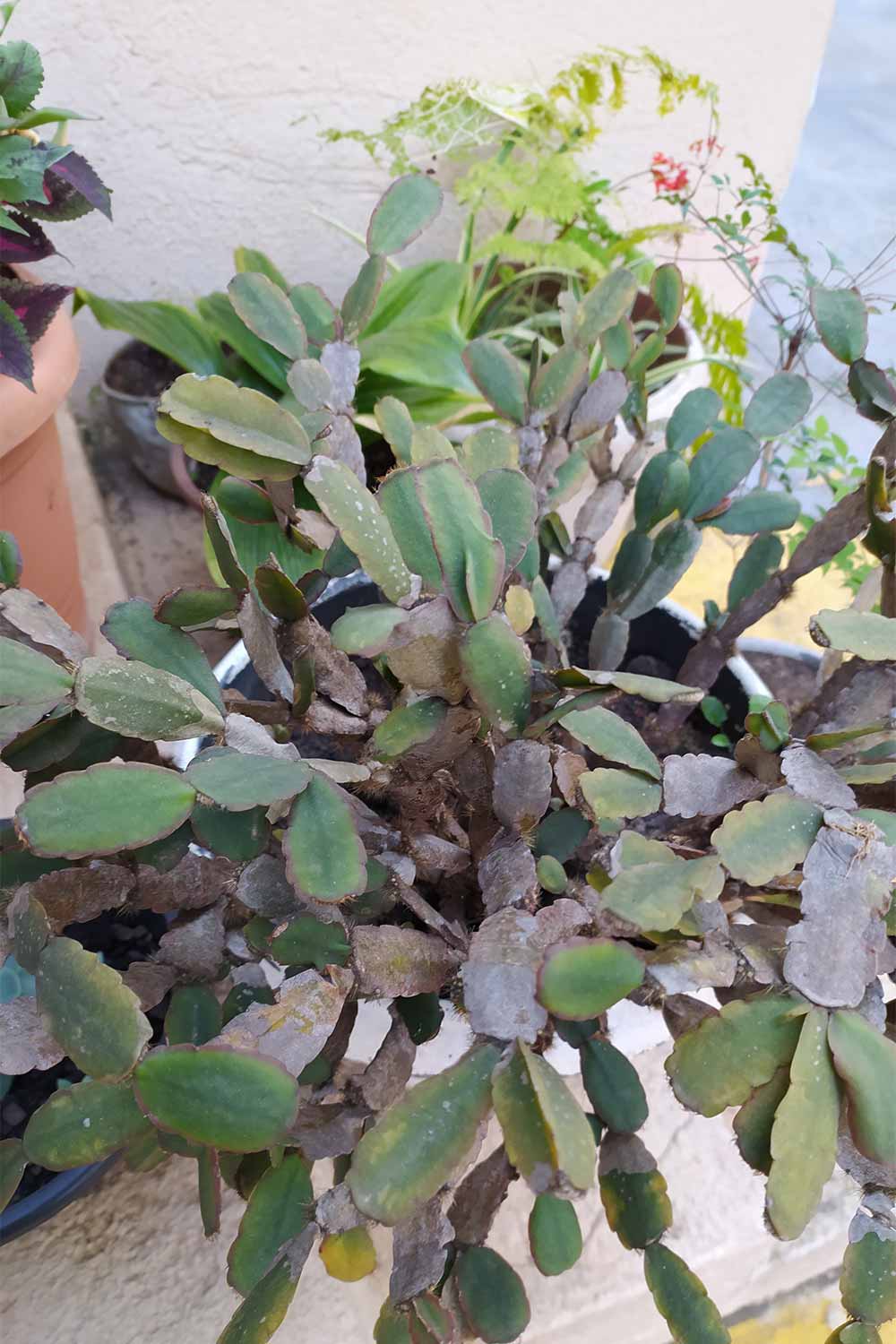Christmas Cactus Leaves Turning Purple and Limp: How to Fix This Common Problem
The Christmas cactus (Schlumbergera) is a cherished houseplant, beloved for its vibrant blooms during the holiday season. However, even the most devoted plant parent may encounter insidious challenges. One of the most alarming signs that your Christmas cactus may be in distress is when its leaves begin to turn purple and limp. Understanding the underlying reasons behind this phenomenon is crucial for restoring your plant’s health and vitality. This article delves into the causes and remedies for this common issue, offering insights into the plant’s care and effective solutions.
Understanding Leaf Discoloration: What Does It Mean?
Leaves turning purple on a Christmas cactus can be a perplexing sight. While it might attract curiosity, it is often accompanied by concerns about the health of the plant. Discoloration in plant leaves can signify a variety of issues, ranging from nutrient deficiencies to environmental stressors. The purple tint typically indicates a possible phosphorus deficiency, which plays a vital role in the plant’s overall health and blooming potential.
In conjunction with the color change, limp leaves are a pressing concern. Limpness often signifies inadequate moisture or over-watering, both of which can have detrimental effects. Christmas cacti are native to the tropical rainforests of Brazil, thriving in conditions that are neither too dry nor overly saturated. The subtle balance of humidity and moisture is crucial for their survival.
Potential Causes: Unearthing the Root of the Problem
There are several factors that can lead to the alarming symptoms of purple and limp leaves. A thorough understanding of these causes will empower you to address the issues effectively.
Nutrient Imbalance: The Role of Fertilizers
One of the primary culprits behind purple leaves is a nutrient imbalance, especially the lack of phosphorus. Phosphorus is vital for photosynthesis, and its deficiency can lead to poor plant health and vigor. A well-balanced fertilizer specifically designed for succulents or cacti can revitalize your Christmas cactus. Look for a fertilizer with a higher phosphorus percentage to rectify this deficiency. Fertilizing during the growing season allows the plant to absorb essential nutrients, enhancing its overall resilience.
Watering Woes: Finding the Perfect Balance
Watering, or the lack thereof, can lead to limp leaves and discoloration. The Christmas cactus prefers soil that is well-drained yet retains some moisture. An overzealous watering regimen can lead to root rot, while underwatering can stress the plant, leading to limp foliage. The frequency of watering depends largely on the environment; factors such as temperature, humidity, and light exposure should guide your watering schedule. Always check the top inch of the soil; if it feels dry to the touch, it’s time to water.
Environmental Factors: Light and Temperature
The environment plays a significant role in the health of your Christmas cactus. They flourish in indirect light but can become stressed with inadequate light exposure. This lack of light can contribute to stunted growth, limpness, and purple leaves. If your plant is placed near a window that receives harsh afternoon sunlight, consider relocating it to a spot with filtered light. Furthermore, temperature fluctuations can be detrimental; keep the cactus in a space that remains consistently warm, ideally between 65°F to 75°F.
Solutions: Nursing Your Cactus Back to Health
Addressing the issues that lead to purple and limp leaves requires a multi-pronged approach. By identifying the root causes and implementing appropriate changes, you can nurse your Christmas cactus back to health.
Revise Your Watering Schedule
Start by assessing your watering habits. Allow the soil to dry out slightly between waterings. Use a pot with drainage holes to prevent water retention. If you suspect over-watering, consider repotting your plant with fresh soil that provides better drainage.
Invest in Quality Fertilizer
As mentioned earlier, a phosphorus-rich fertilizer can make a significant difference. Apply it during the growing season—typically spring through early summer—following the instructions on the label. Avoid over-fertilizing, as this can cause further harm rather than healing.
Optimize Light Conditions
Observe the light conditions where your Christmas cactus is placed. Ensure it receives bright, indirect sunlight. If necessary, move it to a brighter location or supplement with artificial light to provide the optimal light conditions for growth and blooming.
Monitor Temperature and Humidity
Make an effort to maintain a stable indoor environment. Extreme temperatures and drafts can lead to plant shock. A humid environment—possibly achieved through grouping plants together or using a humidity tray—can also aid in preventing stress on the cactus.
Conclusion: A Journey Towards Blooming Resilience
Realizing your Christmas cactus is exhibiting purple and limp leaves can be alarming. However, understanding the underlying causes and implementing effective solutions offers a pathway to restoration. By adjusting your care practices, you promise not only a shift in perspective regarding your plant’s resilience but also an opportunity to observe the revival of its natural beauty. Maintain diligence, and with proper care, your Christmas cactus can once again flourish, rewarding you with its spectacular blooms for many holiday seasons to come.





Leave a Comment